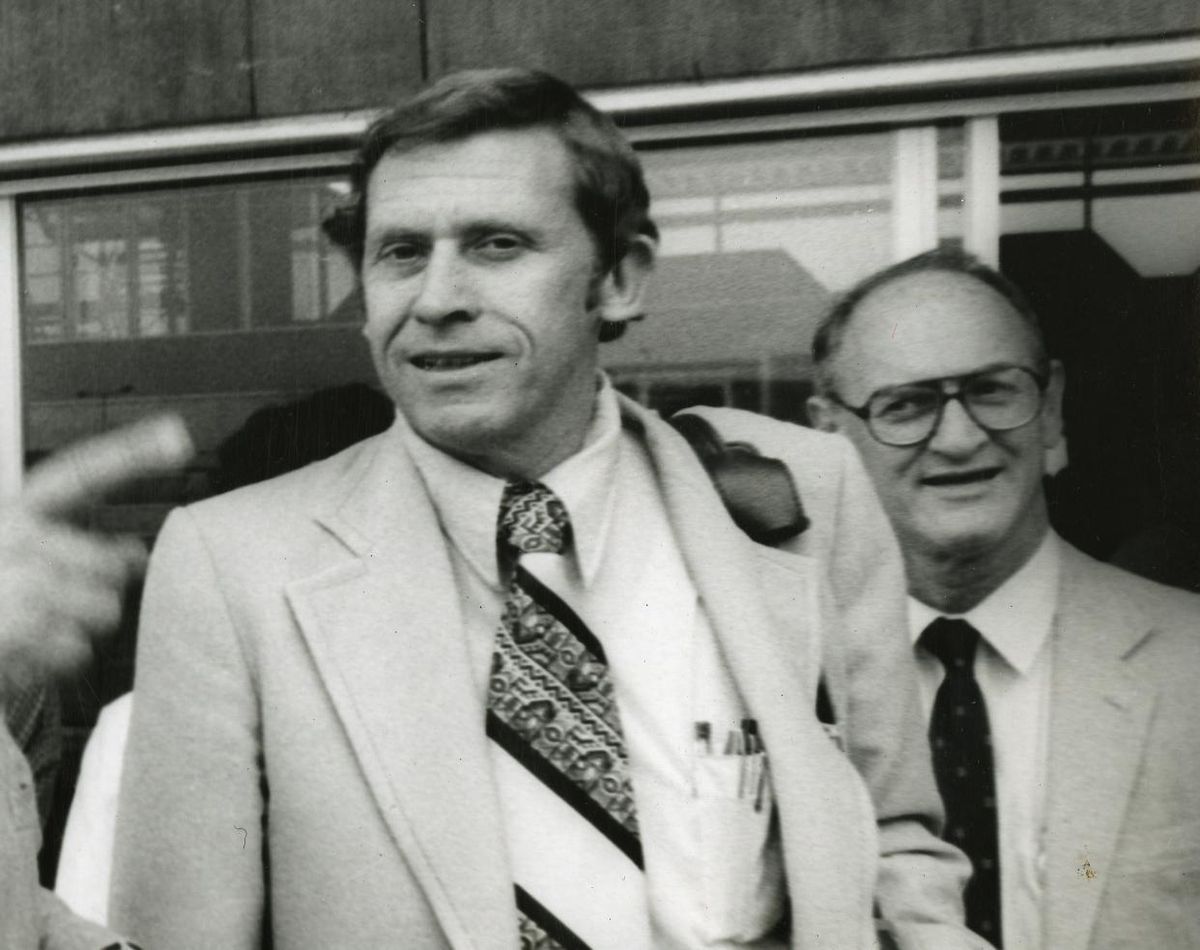Robert E. Larson, 1982 IEEE president, died on 10 March at the age of 83.
An active volunteer who held many high-level positions throughout the organization, Larson was the 1975–1976 president of the IEEE Control Systems Society and also served as IEEE Foundation president.
Larson worked as a power engineer for Hughes Aircraft, IBM,the Stanford Research Institute (now SRI International), and other companies. He helped to found Systems Control, a computer system designer and manufacturer in Palo Alto, Calif., and he was its chief executive for almost 15 years.
He also volunteered with IEEE Smart Village, a program that brings electricity—as well as educational and employment opportunities—to remote communities.
Smart Village cofounder IEEE Life Fellow Ray Larsen says Larson rarely missed the program’s biweekly meetings.
“He and his wife, Sue, became generous donors. Bob and I often had lunch, where I updated him on our latest challenges,” Larsen says. “It was a great honor to benefit from his deep wisdom, constant support, and friendship.”
CHOOSING ENGINEERING
Larson was born in Stockton, Calif., where his father was a physics professor at the University of the Pacific. In 1942 his father was recruited to work on the Manhattan Project, so the family moved to Oak Ridge, Tenn., where the plutonium and the uranium enrichment plants were located.
“Oak Ridge was a very scientifically oriented community,” especially during World War II, Larson said in a 2009 oral history conducted by the IEEE History Center. “Therefore, I was slated to go into science in some respect. My father’s preference was that I would become a medical doctor, but I got interested in computers at an early age. I built computers when I was in high school using telephone relays and things of that sort.”
He earned a bachelor’s degree in electrical engineering in 1960 from MIT. While pursuing his degree, he worked at IBM on its first transistorized supercomputer: IBM 7030, known as Stretch. The computer’s development led to software and hardware such as multiprogramming, memory protection, and CPUs to be incorporated in IBM’s line of computers.
Larson moved back to California to continue his education in “warmer weather,” according to his oral history. He received a master’s degree in EE from Stanford in 1961, then continued at the school as a doctoral student. He conducted his thesis research at Hughes Aircraft, where he designed computers for spacecraft.
After graduating in 1964, he joined SRI, where he worked on ballistic missile defense and electric power systems. While there, he developed tracking technology for missile reentry vehicles. He also designed technology for an air defense system that could remotely shoot down enemy missiles.
He left SRI after four years and, along with several coworkers, founded Systems Control. The company was sold to British Petroleum in 1982.
From 1983 to 2012, Larson served as a general partner and technical advisor to the Woodside Fund, a venture-capital firm in Redwood City, Calif.
He was a consulting professor in the engineering-economics systems department at Stanford from 1973 to 1988.
Larson was the founding president of the U.S.-China Green Energy Council in 2008. The nonprofit, based in Silicon Valley, promotes collaboration between the two countries to help develop technology to combat climate change.
“Larson’s contribution in the U.S.-China collaboration was priceless,” the organization’s leaders wrote on its website. “He was a role model to not only his peers but also to the next generation. His voice and smile will always remain in our hearts.”
AN ACTIVE VOLUNTEER
He joined the Institute of Radio Engineers, one of IEEE’s predecessor societies, in 1958 as a student member at the suggestion of his father.
Larson told the History Center that his father explained to him that if he was serious about working with computers, he should “join an organization that will give you information and people you can talk to and network with.”
He was honored with the 1968 Outstanding Young Electrical Engineer Award from IEEE-Eta Kappa Nu, IEEE’s honor society.
Larson began volunteering in 1968 as an editorial board member ofIEEE Transactions on Automatic Control. He went on to become the editor and served for nearly five years.
He then served on the IEEE Control Systems Society’s administration committee and became the society’s 1975 president. He was 1978 Division I director, and vice president, Technical Activities. He was elected as IEEE president in 1982 and also served as IEEE Foundation president.
Larson was a member of the IEEE Heritage Circle—a cumulative giving donor recognition group. He pledged more than US $10,000 to support IEEE programs such as the History Center and Smart Village. His family made a donation in his memory to Smart Village through the IEEE Foundation. The family has invited others to make donations in his name.
To share your condolences or memories of Robert Larson, please use the commenting form below.
- Jay Last, a Father of Silicon Valley, Dies at 92 - IEEE Spectrum ›
- Radar Technology Pioneer Merrill Skolnik Dies at 94 - IEEE Spectrum ›
- Remembering IEEE Spectrum Columnist Bob Lucky - IEEE Spectrum ›
- Inventor of the First AI System That Could Read Handwriting Dies at 72 - IEEE Spectrum ›
- Remembering Data Compression Pioneer K. R. Rao - IEEE Spectrum ›
- Inventor of AT&T’s Datakit, the First Virtual Connection Switch, Dies at 85 - IEEE Spectrum ›
Joanna Goodrich is the associate editor of The Institute, covering the work and accomplishments of IEEE members and IEEE and technology-related events. She has a master's degree in health communications from Rutgers University, in New Brunswick, N.J.



